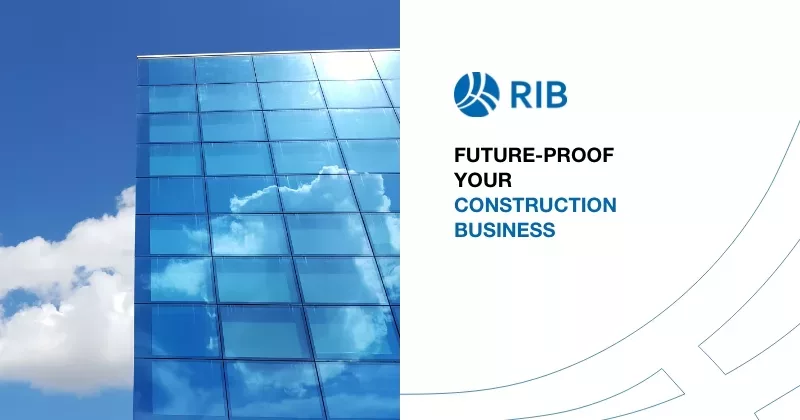10 mins read
Construction Proposal Best Practices: Creating Proposals that Stand Out in a Sea of Competition

In today’s competitive construction industry, any opportunity to promote your business’s unique skills, experience, and culture should be seized. More than just an expanded bid, a construction proposal provides a platform to explain what makes your business the right choice for a project or client, utilizing a combination of accurate facts, figures, projections, and images.
What is a Construction Proposal?
A construction proposal is a document contractors or firms create to convey important project information on timelines, costs, and materials to clients and project owners. It serves as a starting point for both parties during contract negotiations.
While proposals include some of the same information found in construction bids, the proposal document includes a deeper dive into project specifics, technical details, and a description of the unique value and services a company can provide for the client. This makes it important to write the proposal using a format that captures the reader’s attention while highlighting the business’s skills and reputation.
What is the Importance of Construction Proposals?
Proposals present a valuable opportunity to showcase your business’s strengths to prospective clients while securing potentially lucrative contracts. The best construction proposals also help to build brand identity and instill confidence in clients. The content within a proposal typically includes:
- Detailed breakdown of material, labor, and other projected costs
- Project timelines with the duration of each phase
- Risk mitigation strategies for handling unforeseen circumstances
A well-written construction project proposal sets the stage for a successful contractor-client relationship by providing transparent cost estimates, clear expectations, and a tailored approach that aligns with the client’s vision while providing a basis for comparison with other contractors and proposals.
What Elements Should be Included in a Construction Proposal?

Construction proposals vary in length, content, and scope, but the best proposals demonstrate the intensive research and attention to detail that went into creating them. Along with basic information like project overviews and signature pages, the following elements add value and clarity:
1. Client information
A tailored construction job proposal should feature important client information at or near the beginning of the document. This should include the recipient(s), the full name of the company, relevant project names or codes, and other contact information such as the address and phone number. Presenting this information clearly and accurately sets a professional tone and shows the client that time and attention went into creating a personalized document.
2. Scope of work
The scope of work (SOW) section breaks down the specific tasks that will be performed, including work that will be completed off-site or before ground-breaking. Work performed by subcontractors should be specified, and exclusions from the scope that another party will complete should be included. This section is among the most essential parts of the proposal since it sets clear expectations for the task at hand and how it will be managed.
3. Project schedule
A proposal is completed before the tendering and construction cost estimation processes are finalized, which means the project schedule may change in the future. Despite these limitations, including work schedules with task durations and projected completion dates are important. If the schedule is buffered to account for weather delays, material deliveries, or other unpredictable factors, this should also be explained within the proposal.
4. Cost estimations
A breakdown of expenses, also known as an administrative breakout, is another key element of the proposal that should be featured prominently near the beginning of the document. Well-researched types of construction estimates should be categorized for areas such as:
- Material costs by type, quantity, and unit price
- Labor costs for direct and subcontracted workers
- Equipment and tooling rental or purchasing expenses
- Contingency funds to cover unplanned expenses or scope changes
These costs are subject to change during and after contract negotiation, but including them in the construction job proposal improves transparency and helps to highlight any discrepancies in cost estimations or calculation methods.
5. Payment schedules
It may seem presumptive to discuss payment terms before the contract has been formally awarded, but setting expectations for allowable payment windows, accepted payment methods, and necessary deposits can facilitate smoother transactions and fewer misunderstandings once the work begins. Payment conditions for unforeseen expenses, changes, and extras can also be stated in the proposal.
6. Start and finish dates
Most clients and contractors are likely to consider “ASAP” their ideal start (and completion) dates, but there are often obstacles such as permitting issues, project financing, or prior commitments that can keep one or both parties in the starting gate. Clearly stated start and finish dates help both sides manage their time, budgets, and resources more effectively. Firmly established dates also ensure that crew availability and material deliveries are coordinated to avoid delays.
7. Warranty
Construction warranties are guarantees the contractor offers on their completed tasks, including the specific materials used and durability of the work they complete, over a predetermined duration. While these terms will not come into play during the proposal stage, they help establish guidelines and expectations that many clients want to understand before selecting partners. Proactively discussing warranties builds trust and confidence in the contractor’s reliability.
8. Relevant authorities
Depending on the specific project and level of contracted work, relevant authorities may include construction project managers, building code officials, architects of records, and the Occupational Safety and Health Administration (OSHA). Rather than waiting for the client to define the regulatory landscape, investigating the relevant authorities, along with the necessary inspections, permits, and approvals they should expect, demonstrates a proactive approach to compliance.
9. Terms and conditions
Terms and conditions (Ts & Cs) to define important rights, responsibilities, and obligations will not be finalized until a formal contract is signed. Still, including this section in construction proposals is a recommended practice that minimizes downstream surprises and disputes. Along with Ts & Cs related to payment and the overall SOW, the proposal should also outline terms for change handling, insurance coverage, dispute resolution, and other situations that must be handled smoothly to ensure a successful project.
Tips on How to Create a Construction Proposal

Knowing what to include is half the battle, but understanding how to effectively write a construction proposal often involves researching the client’s preferences and priorities and identifying your own strengths. Construction software solutions and established best practices help to make these objectives achievable.
Personalized proposals
Research and compelling content are important, but the project owner also wants to understand what your business stands for and how it fits with their project goals and objectives. For example, if the client has recently pursued sustainable construction practices, be sure to emphasize your own experience and core competencies in this area. Think of the proposal as a letter of introduction between yourself and the client.
Emphasize accuracy and detail
Clients, project owners, and other stakeholders appreciate detailed and readable proposals. Charts, graphs, and relevant images can often convey information more concisely than text. At the same time, the proposal must be error-free, which makes editing and internal review cycles essential prior to sharing it with clients. Construction management, scheduling, quantity takeoff, and estimation software can make it easier to confidently distill complex project information into an easily understandable format.
Leverage professional templates
Utilizing a template does not necessarily mean sacrificing a personalized approach. Professionally developed templates for construction proposal management ensure the necessary information is included in a visually appealing format while still leaving room for customization. This reduces the chances of leaving out important details or creating a document that is overly long and cumbersome. Many such templates are available for little or no cost to help guide the proposal creation process.
Use professional estimating software
The best software tools support construction proposal creation by producing error-free results faster than traditional methods and providing flexible estimates and cost breakdown structures to suit each client’s needs. RIB CostX is an all-in-one takeoff, estimating, and reporting tool designed to be adaptable to different projects, regions, and industries. Advanced drawing intelligence allows quantity takeoff from all commonly encountered 2D and 3D design formats.
Conclusion
Construction proposals can be valuable calling cards for contractors and construction companies, setting the tone for long and successful partnerships. Advanced construction software and reporting tools bolster the creativity, research, and accuracy that make a proposal compelling.
RIB software supports the creation of winning proposals with a suite of purpose-built tools designed to improve information accuracy, project efficiency, document management, and cross-functional collaboration. Get your free demo today and find out why our solutions are trusted by over 23,000 companies in more than 100 countries!
Most Recent
10 mins read
11 mins read
11 mins read
10 mins read
Blog Categories

Ebook











